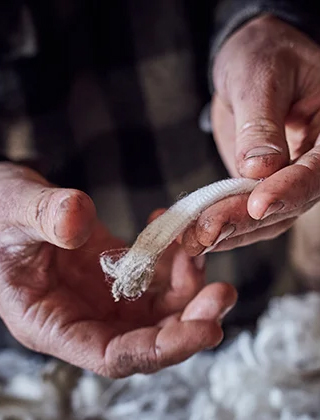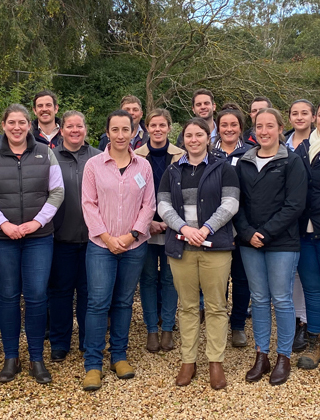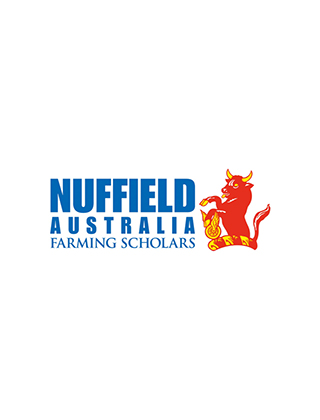Science and Innovation Awards for Young People in Agriculture
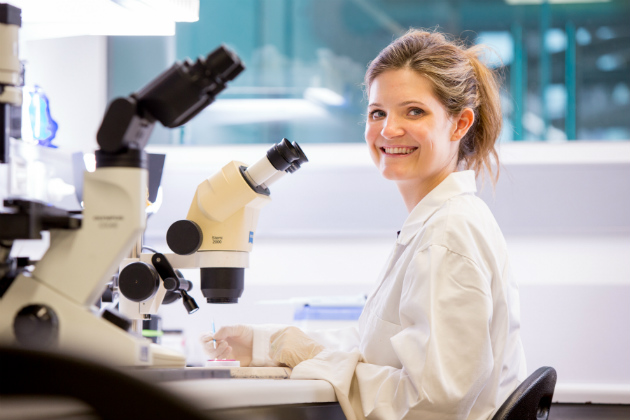
The Science and Innovation Awards for Young People in Agriculture is a competitive grants program that provides funding for innovative research projects that will benefit Australia's agricultural industries.
Each year the Department of Agriculture with its Award partners presents the Science and Innovation Awards for Young People in Agriculture - a competitive grants program that provides funding for innovative research projects that will benefit Australia's agricultural industries.
The awards are coordinated by the Australian Bureau of Agricultural and Resource Economics and Sciences (ABARES) and are open to young people who are working or studying in rural industries. AWI is a partner and supports the Award.
The Science Awards encourage young scientists, researchers, innovators and others active in the agriculture sector who have an original and innovative project that will contribute to the ongoing success and sustainability of Australia’s agriculture, fisheries and forestry industries. The Science Awards have already helped 250 young Australians make their ideas a reality and showcase their talent to the world.
The Science and Innovation Awards for Young People in Agriculture aim to:
- assist primary producers to develop more competitive, internationally focused and self-reliant industries through attracting innovative research proposals that will lead to longer term innovation in the sector
- encourage the uptake of science, innovation and technology in rural industries
- advance the careers of young researchers, innovators and scientists 18-35 years, through national recognition and funding of their research ideas
- encourage participation in science, innovation and technology in rural industries and increase interactions between the tertiary and government sectors.
I’m always trying to align the research with an actual industry need.
2018 recipient of the Australian Wool Innovation Award – Dr Jamie Barwick
Science and Innovation Awards for Young People in Agriculture
For more information and to apply visit the ABARES website.
Recipients of the Science And Innovation Awards For Young People In Agriculture
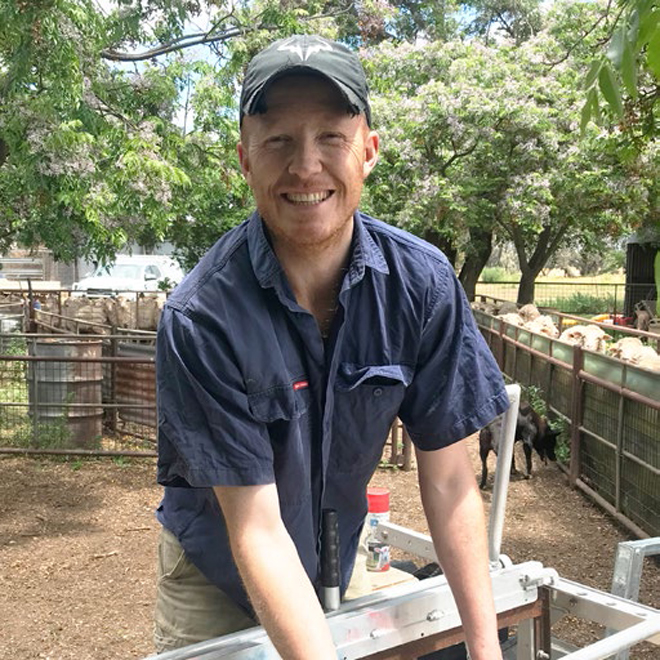
Research topic: Better skin follicle information
Dr James Preston is investigating skin follicle traits in sheep and if they can be used to determine productivity and improve selection accuracy.
In the past, there’s been a lot of research into whether boosting wool follicles can improve productivity for farmers. But scientists haven’t found a strong link between the density of skin follicles and sheep fleece weights. James is looking to change that.
One theory is that sheep are affected by something called ‘allometric growth’. James explains that sheep don’t develop any new wool follicles after four weeks of age. Instead, the existing follicles stretch over the sheep’s body as the animal grows.
“Bigger sheep naturally have a lower density of follicles because their skin is stretched over a larger area. So the project is looking to measure the surface area of different sheep and adjust the follicle density measurements based on body size across a cohort of animals,” James said.
James will then look at whether the corrected skin follicle information correlates better with the fleece production of young and adult sheep. The potential benefits of the findings will allow early selection of sheep that may result in greater lifetime productivity for the wool industry.
In addition to his research position at the University of New England, James runs a private sheep business called Preston Livestock Solutions in which he pregnancy scans about 60,000 sheep a year, and does sheep classing and ram purchasing on behalf of clients.
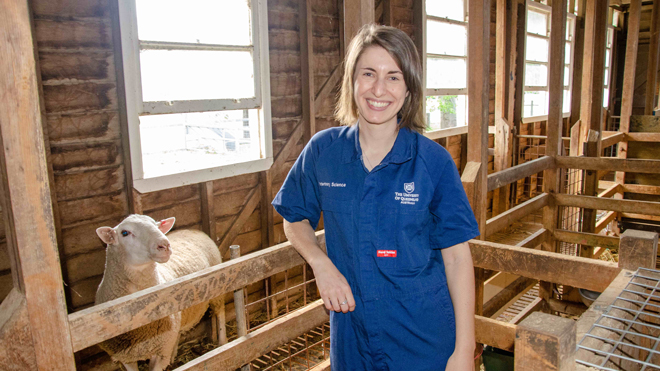
Research topic: Improved cervical artificial insemination
A passionate reproductive scientist and lecturer at the University of Queensland, Dr Taylor Pini is exploring the interactions between ewe cervixes and frozen ram semen in cervical artificial insemination (AI).
Artificial breeding in sheep is usually done through laparoscopic AI. However, Taylor says wider adoption of the procedure by producers is constrained because it is labour intensive, expensive and invasive for the animals. A better option would be cervical AI – but that comes with pregnancy rates below 30% with elite frozen semen compared to 70% using freshly collected semen.
“This project is trying to understand what actually happens when we put ram sperm in the sheep cervix, how the cervix reacts, and better understand the impact on sperm when it is frozen and thawed and then expected to swim through the cervix in search of an egg,” Taylor said.
“If we figure out what’s going wrong there with thawed frozen semen, hopefully there’s a mechanism that we can use to intervene to try and improve outcomes.”
Taylor co-hosts Repro Radio, a monthly podcast for researchers, vets and farmers on the science of animal reproduction. She says making artificial breeding technologies more accessible for producers could have huge benefits for the industry in increasing the use of elite semen and reducing costs.
“If you compare the sheep industry to the dairy industry for example – the dairy industry is very heavily reliant on artificial insemination. They’ve seen huge leaps in genetic progress. Whereas we haven’t really seen as much of that in the sheep industry,” she said.
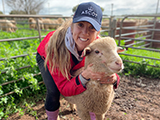
The University of Adelaide’s Bobbie Lewis Baida is exploring how hot weather impacts ram fertility. She will undertake the 12-month project through an AWI-sponsored Science and Innovation Award for Young People in Agriculture.
High testicular temperature is known to reduce the amount of morphologically normal, motile and fertile sperm. And with temperatures rising under climate change, the new project will see Bobbie investigate how scrotal and body temperature regulation affects semen quality and fertility in Merino rams.
Bobbie, from the University of Adelaide's School of Animal and Veterinary Sciences, says the project complements her existing PhD research on the impact of heat stress on ewes. She is using vaginal temperature sensors to monitor the core temperature of ewes in the paddock, linking this to behaviour, ovulation rate, conception rate, foetal growth and lamb birthweight.
Adding rams will allow Bobbie to collate a complete picture of how climate change will affect sheep reproduction.
“I’ll hopefully be able to tie it all together and address a lot of unanswered questions,” she explained.
The temperature of ram testicles is regulated independently, typically sitting at 4-5℃ below the animal’s core body temperature. Bobbie will study how hot weather affects this over the 2022/23 summer, using technology designed to continuously monitor scrotal and body temperature with minimal impact on the rams.
With a changing climate and a recent review reporting that heat stress around mating already costs the Australian sheep industry approximately $97 million each year, Bobbie says there is an urgent need to address the issue.
“I think it's important that we realise the ramifications of climate change, and I’m really excited that my research is a part of solving the problem in a small way.”
The University of Adelaide’s Bianca Agenbag will undertake a 12-month project aiming to fill a knowledge gap in the early development of lambs by focussing on colostrum, the first milk produced by ewes.
“Colostrum contains all of the essential antibodies needed for the lamb to start its digestive system and gastrointestinal tract,” Bianca said. “Lambs are born with absolutely no antibodies of their own, so having that first drink is absolutely crucial.”
Bianca says that while a lot of research has been done into colostrum in humans, cattle and pigs, relatively little has been done in sheep. Her current research aims to change that by investigating colostrum quality in Merino ewes.
“As we started digging deeper, we figured out that colostrum doesn’t just affect the essential health of the lamb but also reproductive factors, production factors and even behaviour. I saw this as a massive gap in the research,” she said.
Bianca will use the grant to further her research and look at the impact of colostrum on the reproductive potential of rams. It follows other research showing quality colostrum can improve scrotal growth and semen characteristics in pigs.
She says one of the main outcomes of her project will be developing selection criteria to select ewes with better colostrum.
Dr Tom Clune, who is currently undertaking a PhD research project at Murdoch University, will investigate the role that Chlamydia has on sheep health and lamb losses in Australian flocks.
“Reducing lamb wastage is a priority for the sheep industry, as it will improve farm productivity and animal welfare, and address risks to community support for wool production,” Tom said.
“Lamb loss between mid-pregnancy and weaning is associated with a $1 billion annual productivity loss for Australian agriculture, yet the underlying causes of pregnancy losses and stillbirths remain poorly understood. Preliminary findings from my PhD project have indicated that Chlamydia is a disease that might have been overlooked.
“In conducting my PhD fieldwork in 2018-19 on ten WA farms, I found Chlamydia infections were present in more than half of abortion or stillborn cases, suggesting Chlamydia might cause significant wastage under some circumstances, although the wider economic impacts of the disease are not known.”
As part of the project, Tom also plans to develop a quick, cheap and portable tool for diagnosing Chlamydia in sheep. It will be based upon a test already developed for detecting infections in wildlife and horses.
A dislike for fencing on his family farm in Henty inspired Hugh McKay to develop an automatic fencing trailer. It’s a project inspired by hours spent fencing on hot days.
“I always thought it was a very slow, tedious process, moving back and forth up the fence a number of times,” Hugh says. “It’s probably my least favourite thing to do on the farm, especially in the middle of summer. A lot of effort goes into it and, at the end of the day, if you’ve done 200 metres, that’s a good day’s work.”
Hugh studied product design and engineering at Swinburne University, and previously worked for Adshel in Melbourne. In need of a break, and with his parents glad of an extra pair of hands during the drought, he returned to the family farm a year ago. But he couldn’t help applying his product design background to the fencing trailer.
Using the Smart Fencer trailer begins with placing your phone or controller where you want the fence to start and end. The system calculates how many posts to load up, depending on post spacing, length and distance.
“Once you’ve got all your posts in the machine and your wire spinner’s set up, then you just drive to the beginning of the fence” Hugh says. “It’ll pull the fence posts out individually, bang them into the ground, tell you to go forward and build the fence as you drive along.”
The Science and Innovation Award project will help Hugh develop a working prototype of his trailer and hopefully get it into production. He estimates that investing in a fencing trailer would pay off within a few years for an average farm, and greatly reduce the time and labour needed for fencing.
Dr Jamie Barwick, a precision agriculture lecturer at the University of New England, is developing a way to automatically pick up parasites by monitoring changes in sheep behaviour.
His Science and Innovation Award project will use motion sensors and GPS trackers attached to the animals to detect changes in activity and movement.
Ultimately Jamie wants to develop a behaviour prediction algorithm that can act as an early warning system for animals showing signs of declining health, leading to earlier detection and intervention before clinical disease becomes apparent.
“I’m working to try and pick that up a little bit earlier than you would in a traditional way of using a faecal egg count,” he says. “I’m looking at whether there’s some behaviour changes – possibly that’s an increasing behaviour or a decreasing behaviour – or a different grazing location. We’re hoping to try to pick that up and see if that’s related to some increasing worm infection in the sheep.”
The cost of internal parasites to the Australian sheep and wool industry is more than $430 million annually which, after neonatal mortalities, is the highest animal health cost the industry faces. If it works, Jamie’s idea could be of real benefit to farmers.
“I’m always trying to align the research with an actual industry need,” he says. “If we can actually do it and a farmer can get an early indication of animals that are becoming unwell, I know that’s going to be really valuable.”
Read more about the project in Beyond the Bale.
Research into the genetic variation within the sheep blowfly Lucilia cuprina in Australia is under way, thanks to an AWI-supported grant that aims to provide ammunition for the wool industry in its battle to protect the nation’s sheep flock from flystrike.
The research is being undertaken by 30-year-old Dr Clare Anstead, a lecturer in parasitology in the Faculty of Veterinary & Agricultural Sciences at the University of Melbourne, who was presented with a Science and Innovation Award for Young People in Agriculture in March 2017.
Dr Anstead was the lead researcher on the project that in 2015 completed the identification of all 14,554 genes that make up the sheep blowfly. That project, co-funded by AWI, to decode the sheep blowfly genome discovered around 2,000 genes not seen before in any other organism. Some of these ‘orphan’ genes hold the key to the parasitic relationship between the blowfly and the sheep, and could be targeted to develop a completely new method of flystrike control.
The new project supported by the AWI-funded Science and Innovation Award aims to build on this previous research by using genomic and related information to investigate genetic variation within the Australian sheep blowfly.
Approximately 100 adult blowflies (50 females and 50 males) will be collected for analysis from infected sheep and their surrounding environment, from each of ten disparate locations across Australia.
Dr Anstead says insights into the population genetics of the blowfly are critically important to provide a basis for the identification of key target genes that could be used in the design of new ways to combat the parasite.
Read more about the project in Beyond the Bale
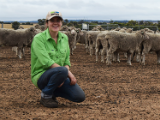
Amy is set to investigate if unmanned aerial vehicles can be used to improve lamb survival by increasing the frequency of monitoring while minimising disturbance to lambing ewes.
“The project is looking at ways to improve lamb survival through understanding ewe and lamb behaviour,” she says. “We’re also better utilising technologies that are available on the farm to potentially improve efficiency and productivity.”
In Australia one in four lambs die before weaning, with survival rates particularly poor in Merino sheep and when ewes give birth to twins.
This mortality rate comes at a huge economic cost, with estimates that improving the survival of single lambs by 15 per cent and twins by 30 per cent would deliver returns to the industry of $285 million and $515 million respectively.
Amy, who is a PhD student at Murdoch University, says current methods of assessing lambing sheep are limited and often involve close human observers.
“This can result in disturbances to natural ewe and lamb behaviour and can potentially cause impacts on lamb mortality,” she says.
On the other hand smart technology such as drones could cover 30 hectares or more, checking food, water and fences as well as the behaviour between ewes and lambs after birth.
This is particularly important in the first three days following delivery, when more than 80 per cent of lamb mortalities occur.
Amy was born in the regional town of Albany and spent a lot of time on farms growing up.
“I’ve really enjoyed the livestock side of things from a young age, which is where my passion has come from,” she says.
Research into an innovative use of technology to help woolgrowers protect their flocks from wild dog attacks is under way. The research will be undertaken by 34 year old Dr Greg Falzon, a lecturer in computational science at the University of New England in Armidale, who is the 2015 recipient of the AWI-supported Science and Innovation Award for Young People in Agriculture.
The project will research and develop a 'listening station' device – the Electronic Shepherd – to detect the presence of wild dogs and attacks on stock and then send an alert to the woolgrower's mobile phone, giving the woolgrower the opportunity to intervene and disrupt an attack and discourage future attacks. The aim ultimately is to reduce stock losses and costs.
Dr Falzon says technologies used to combat wild dogs in Australia have largely remained unchanged since the 1950s, but new and innovative solutions could help address the issue.
"If sheep producers could reliably detect dog attacks as they are occurring or just prior to an attack, at any hour and at even the most distant locations of their property, then there could be an opportunity to thwart a dog attack," he said. "Early warning technology could allow woolgrowers and sheep producers to take the initiative back from the dogs and allow them to protect their stock."
The Electronic Shepherd system will include a listening station, placed in the paddock close to the flock, continually listening to the surrounding environment and monitoring the flock as it goes about its daily activities.
"Sophisticated real-time embedded signal processing software and algorithms would automatically detect the presence of predators, such as a dog bark, or an attack on the flock indicated by extensive bleating or sheep running. On board processors would relay an alert signal and location to the woolgrower via the mobile network or, if not available, via long range radio link."
See the AWI media release 21st century flock protection from wild dogs for more details.
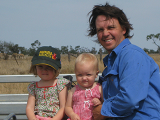
Fifth generation Longreach farmer and Nuffield scholar James Walker wants nothing more than to revolutionise livestock management in Australian agriculture... one sheep at a time.
James is developing 'Paddock Pulse' to electronically monitor animal physiology in real-time to improve sustainability, animal welfare and profitability in the wool industry. His system uses technology developed to monitor performance of elite athletes and army personnel.
Sheep will be fitted with National Livestock Identification Scheme (NLIS) Radio Frequency Identification Devices (RFID) ear tags. A scanner will be installed at the entrance to water points and each sheep will be logged as it passes the scanner - effectively monitoring when each sheep entered the water point, how long it spent there and the order of arrival.
"This data may provide an insight into flock dynamics and rank individuals on their feeding efficiencies... it may also identify weak or lame sheep, sheep that have a lamb and high performers," says James.
James also plans to fit sheep with accelerometers (like pedometers) to track the number of steps they take, a proxy for how much energy the animals are using and how far they travel to find food. Portable scales and condition scoring will complement the new technology and allow producers to expertly assess feed requirements and availability to optimise both animal welfare and productivity.
The accelerometers will also record speed to help establish whether a sheep has been chased by a predator. If so, an alert will be sent to base the next time that sheep passes the scanner. The system will be linked to a computerised accounting system that can be used to optimize financial outcomes.
"Remote real-time individual physiological monitoring is on the verge of a revolution for animal management," says James. "When the revolution occurs it will transform agriculture and animal management - socially, environmentally and financially."
For more information, visit http://www.agriculture.gov.au/abares/conferences-events/scienceawards






